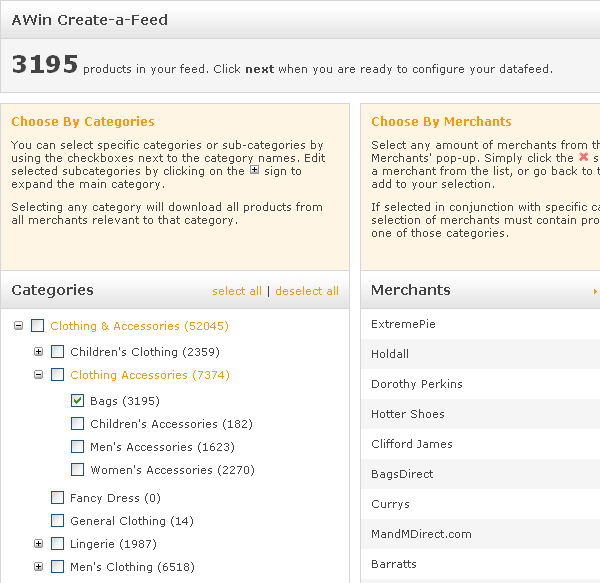 This was an old post that I’ve revamped for human consumption. “What Are Affiliate Networks & Should I be using Them?” is a really good question and a very short answer is yes, you should be.
This was an old post that I’ve revamped for human consumption. “What Are Affiliate Networks & Should I be using Them?” is a really good question and a very short answer is yes, you should be.
I’m looking forward to explaining and givening examples over the next three articles, as I discuss what they do, how they work, who uses them, how much they cost and ultimately why you should have a network as part of your online marketing strategy.
The Affiliate Concept
Wikipedia:
An affiliate network acts as an intermediary between publishers (affiliates) and merchant affiliate programs
Starting at the beginning, we have merchants, businesses that have websites and want more customers, we also have people like me affiliates (I was focused on Affiliate Networking for the majority of 2010) who want to specialise in their area which is known as publishing and will happily pimp themselves for a percentage cut of the merchants sales.
Affiliates and merchants normally come together via a 3rd party called an ‘Affiliate Network‘, which is a place where affiliates can find merchants to promote & vice’versa and acts as a trusted party between them both. As you can imagine there are a few of these globally and I’ll be looking at these in detail next week.
The Merchant gives the Affiliate a fee, typically for a confirmed sale, again typically through an Affiliate Network.
Affiliate Program Fees
Affiliate networks hold lists of merchants and lists of affiliates, then promote them to each other. The affiliate networks make their money in several ways:
- The start up fee to the merchant
- The on going monthly fee from the merchant
- Commission on the commission’s paid to merchants
- And in some cases a fee they take from the affiliates for joining
That sounds like a lot of fees to shell out as a merchant, but to give you some idea, the start up fees for a affiliate program range from a few hundred, to a few thousand and monthly costs vary from £250-500 or more.
The actual percentage paid to affiliates (those nice people known as publishers that get you customers) can vary and be tiered on performance. For technology based products, commissions of 1-3% are common, for clothing 8-15% are common, holidays are similar of not more and gambling can be much higher.
Note: Are these fees starting to ring true to the updates set by eBay in the eBay May 2011 update, Tech = 3%, CSA = 15%?
Yummy Cookies
Cookies are worth a special mention here, this is because you can set the length of time you can allow your affiliate to gain commission on a sale from the time they referred them to your site(s).
Note: We’re not talking about those delicious snacks, we’re refering to cookies, that are dropped by websites into the clients browser, the HTTP cookie, see here for more info.
Normally this is a 30 day cookie, some companies offer 7, 15, 30, 45, 60, 90 or infinite or if your name is Amazon.com, then the cookie life is 24 hours. More on that later in another article as I am not willing to contribute to the ongoing war, sorry debate over cookies and their timings at this time (this is an industry wide hot topic, sadly with no ‘right/perfect’ view).
DataFeeds
There are several different ways you can tackle affiliate networks, you could ban PPC affiliates or stay text link only OR you could open your affiliates up to allowing them to use PPC (on or off your brand name) and give them something called a ‘datafeed’.
Affiliate networks do more than just put an affiliate and a merchant in touch, they can handle data feeds given from the merchant to the affiliate network, for adaptation and distribution to their affiliates, then track clicks the sales and report these back to both parties.
Datafeeds are files that contain the very latest (hopefuly!) information from a merchant on their product catalogue, so you as the merchant can keep your affiliates up to date on the latest products you have.
Below is a screen shot of items selected using the AffiliateWindow ‘Create-a-feed’ tool in their new (ish) Darwin interface.

Affiliate Window Create-A-Feed Tool
Contacting Affiliates
This is also part of your fee to the Affiliate network, you should be assigned an account manager who will ‘woo’ the top affiliates in your product area(s) and get them to take your feeds. A tip here is to do two things. Firstly research who is promoting your products, secondly now knowing who is, speak with your account manager and get them to promote you to them.
As a merchant, you can either choose to allow anyone to join your network (suggested) or filter the affiliates that want to join (not suggested) and the different affiliate networks have different tools to allow you to communicate with your affiliates.
Here is a screen shot of a message from the Dorothy Perkins affiliate program:

Example: Dorothy Perkins Affiliate Email
In the second part of this series I’ll be covering the following sections:








